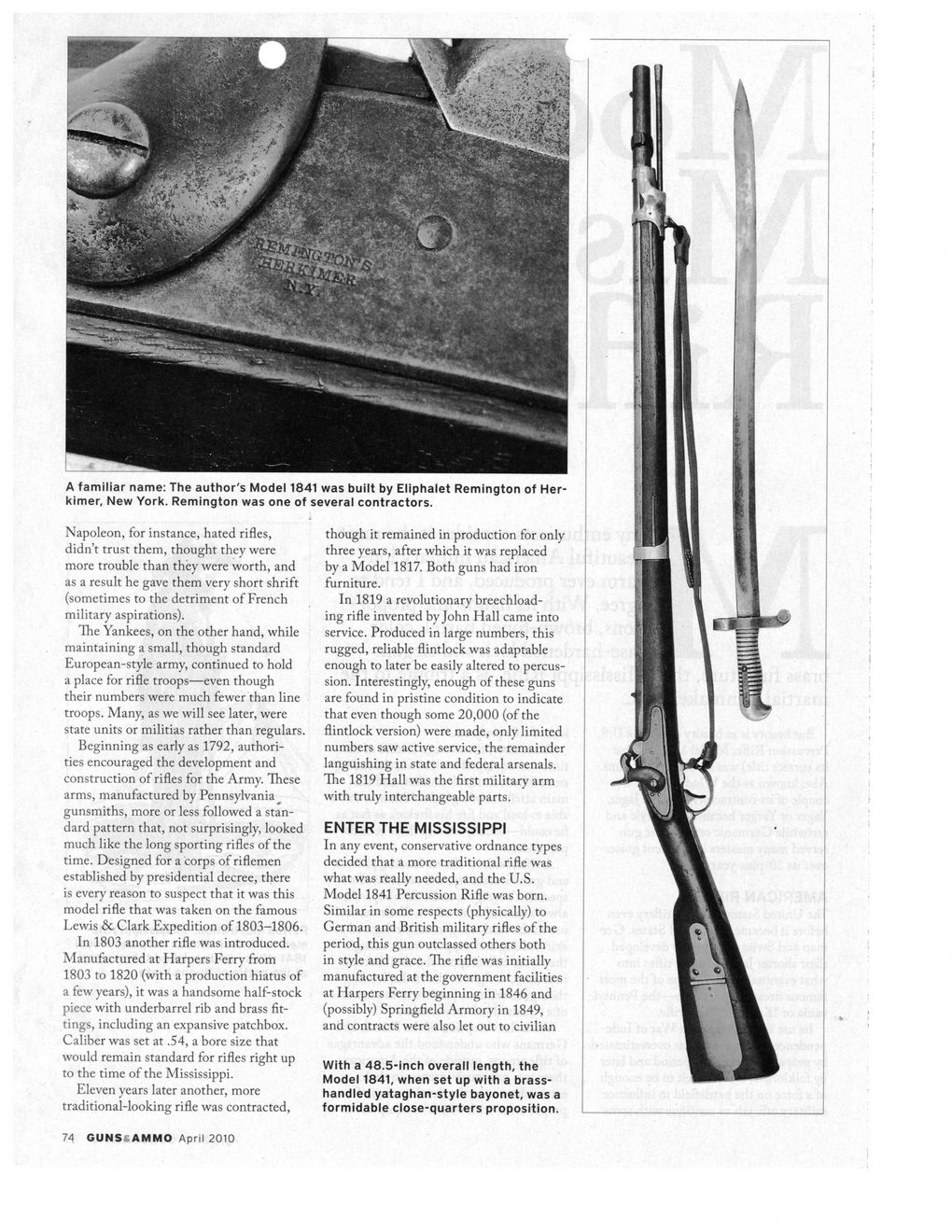This text was obtained via automated optical character recognition.
It has not been edited and may therefore contain several errors.
A familiar name: The author's Model 1841 was built by Eliphalet Remington of Herkimer, New York. Remington was one of several contractors. Napoleon, for instance, hated rifles, didn’t trust them, thought they were more trouble than they were worth, and as a result he gave them very short shrift (sometimes to the detriment of French military aspirations). The Yankees, on the other hand, while maintaining a small, though standard European-style army, continued to hold a place for rifle troops—even though their numbers were much fewer than line troops. Many, as we will see later, were state units or militias rather than regulars. Beginning as early as 1792, authorities encouraged the development and construction of rifles for the Army. These arms, manufactured by Pennsylvania gunsmiths, more or less followed a standard pattern that, not surprisingly, looked much like the long sporting rifles of the time. Designed for a corps of riflemen established by presidential decree, there is every reason to suspect that it was this model rifle that was taken on the famous Lewis &c Clark Expedition of 1803-1806. In 1803 another rifle was introduced. Manufactured at Harpers Ferry from 1803 to 1820 (with a production hiatus of a few years), it was a handsome half-stock piece with underbarrel rib and brass fittings, including an expansive patchbox. Caliber was set at .54, a bore size that would remain standard for rifles right up to the time of the Mississippi. Eleven years later another, more traditional-looking rifle was contracted, though it remained in production for only three years, after which it was replaced by a Model 1817. Both guns had iron furniture. In 1819 a revolutionary breechload-ing rifle invented by John Hall came into service. Produced in large numbers, this rugged, reliable flintlock was adaptable enough to later be easily altered to percussion. Interestingly, enough of these guns are found in pristine condition to indicate that even though some 20,000 (of the flintlock version) were made, only limited numbers saw active service, the remainder languishing in state and federal arsenals. The 1819 Hall was the first military arm with truly interchangeable parts. ENTER THE MISSISSIPPI In any event, conservative ordnance types decided that a more traditional rifle was what was really needed, and the U.S. Model 1841 Percussion Rifle was born. Similar in some respects (physically) to German and British military rifles of the period, this gun outclassed others both in style and grace. The rifle was initially manufactured at the government facilities at Harpers Ferry beginning in 1846 and (possibly) Springfield Armory in 1849, and contracts were also let out to civilian With a 48.5-inch overall length, the Model 1841, when set up with a brass-handled yataghan-style bayonet, was a formidable close-quarters proposition. 74 GUNSSAMMO April 2010

Mississippi Rifle Document (002)